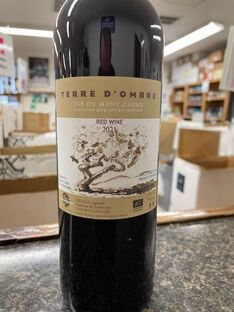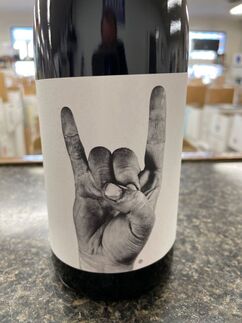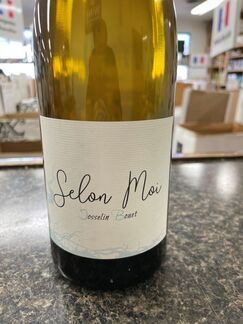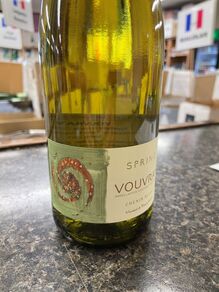 From a technical and legal standpoint, we would describe this wine by saying it's a 'baby Bandol'. In our hearts and based on our palates (and channeling our inner Telly Savalas), we would say "it's Bandol, baby!' The Delille family spent more than a decade restoring and renovating the Terrebrune property in Bandol before creating their first commercial vintage in 1980. Much of their strategy, formed in large part with help from their neighbors at the famous Domaine Tempier, involved replanting many parcels of vines that had been poorly created by the previous owners, and even leaving parcels unplanted for an extended time to improve the soil health. As a result their property of roughly 70 acres -all within the borders of Bandol- has vines of vastly different ages. The younger vines are 'declassified' to be used in this more basic bottling, aged for a shorter time in used oak and released young to drink young, but is still dripping with classic Bandol character. Savory currents, dark berry and Provencal herbs pop from the glass at first pour, getting more intense as it opens but staying subtle and cool. A major difference between a true Bandol and a wine at the IGP designation is the alcohol level, where the IGP bottlings generally landing 1%-1.5% less than Bandol. The palate definitely feels lighter because of it, but only by comparison, and also shows a lot less of Mourvedre's intense tannins, allowing the dark herbal flavors to hit your palate a lot easier. The approachability for a wine from this region is almost unheard of, and it gets more compelling the longer it's open. A great wine to take your grilling to the next level.
0 Comments
 'Don't mess with the bull, or you'll get the horns'. The 'bull' in this case is the Toro wine region in Old Castile, just down the river from Ribera del Duero. Just like its more famous neighbor, Toro has grown grapes for centuries but known for quality only in the past 30-40 years. Their style is also largely built on more modern techniques and characters, richer and extracted, more new oak, etc. So to go against the establishment style is to 'mess with the bull', and that is exactly where the Bigaro wines go, embracing the horns and daring to be different. The wine is 'experimental' in that Kiko calls his own shots and sets his own standards working the fruit from his family's ancient vineyard, building on techniques learned at working wineries on four continents, like following the mantra at harvest 'don't cut fruit you wouldn't eat'. The wine has plenty of size, but not in a dense or heavy way, with lots of dusty dark fruits on the nose from the start, earning a bit of blackberry sweetness and peppery spice the longer it stays open. The palate is very mouthfilling with its unfiltered texture and surprisingly light dusty tannin, allowing the fruit to show through naturally with some unexpected tart notes (boysenberry-ish?) behind the currant and dusky black cherry. The finish is remarkably refreshing for a wine with such dark notes and almost unheard of from the region. A wine for big foods, but not one-dimensional kill-it-and-grill-it dishes, able to handle lots of marinades and savory side dishes.  For much of its existence Muscadet was considered a very basic wine region with little potential for making 'great' wines, only straightforward white wines that go great with local seafood but offer little to the outside world. In the late 1980s/early 1990s, a 'New School' developed looking to make more substantial wines from some of the older and more unique vineyard sites, helping them to stand out by aging them on their lees for an extra long period of time to give them more body. The best producers of the time - Pepiere, Michel Bregeon, Luneau-Papin- earned quite a fan following as their wines were routinely described as 'baby Chablis' for their seashell-like saltiness. That 'New School', has now not as new as they once were, but it's great to see more of the new generation they helped to inspire coming into play. New to the area and with a youthful family member at the helm, Bouet checks all the right boxes for making excellent Muscadet. Crisp apple and leesy pear aromas pop from the glass with a hint of wet seashell are the hallmarks of Muscadet, and they're all here. Plenty of natural weight give the apple and pear fruit an extra juiciness on the palate, with a mouthwatering salinity that just begs for something from the sea to pair with it. The brinier the better!  Even though the calendar isn't quite ready to say it for another two weeks, all the signs of Spring are here. The temperature, the budding flowers, the impending Madness that is March, and of course major league baseball's Spring Training (it's in the name, for crying out loud!). Best then to get an early jump on finding your wine choices for the season. While you don't have to limit enjoyment of this wine to just these months, it doesn't need saying Spring on the label for it to just scream it from the glass. Crisp pear and red apple in with the signature Vouvray honeyed aromas, but absolutely dry (sec) and even slightly herbal in a lavender/tarragon way. The palate is cool, clean and mouth-wateringly juicy with a bit of skin tannin to the texture, lots of apple flavors that feel almost crunchy with all the acidity. Very all purpose wine capable of working with creamy fish or white meat courses, lighter Spring salad or just chilled down while you enjoy the sunshine for a change. |
The Best of the Best.We offering free tastings on these wines in the store every Thursday and Friday, and a 10% discount off the retail price through the duration of the day. Come on by and give them a try! Archives
July 2024
Categories |
Location |
|

 RSS Feed
RSS Feed